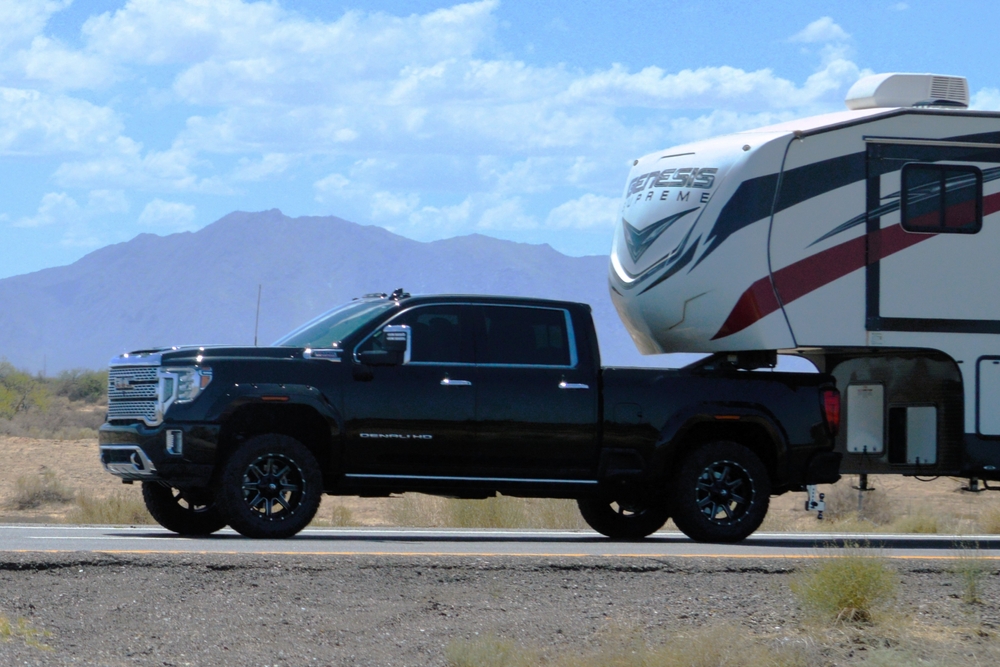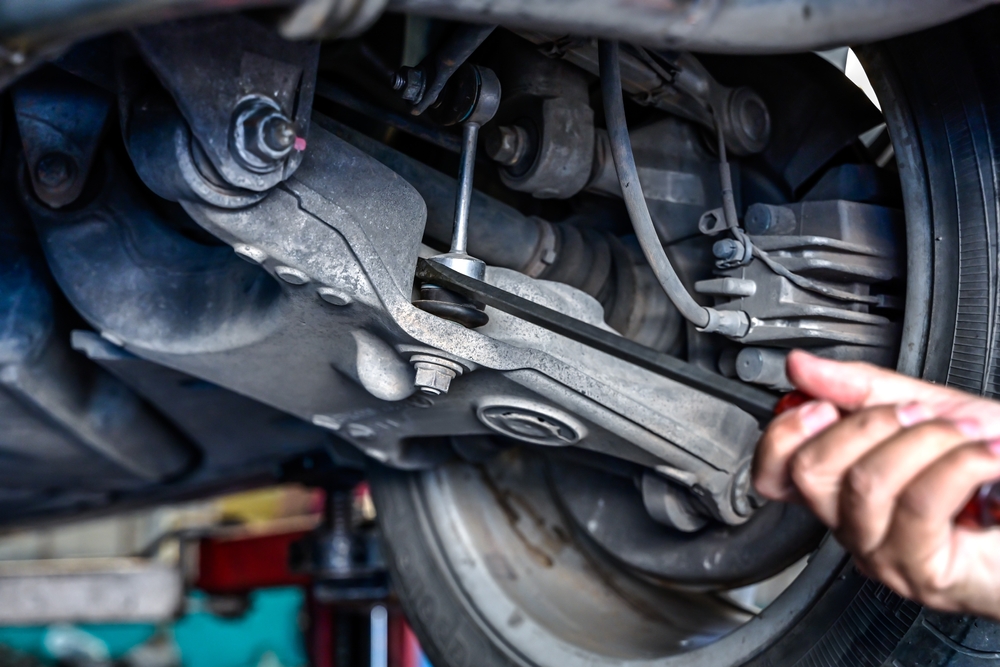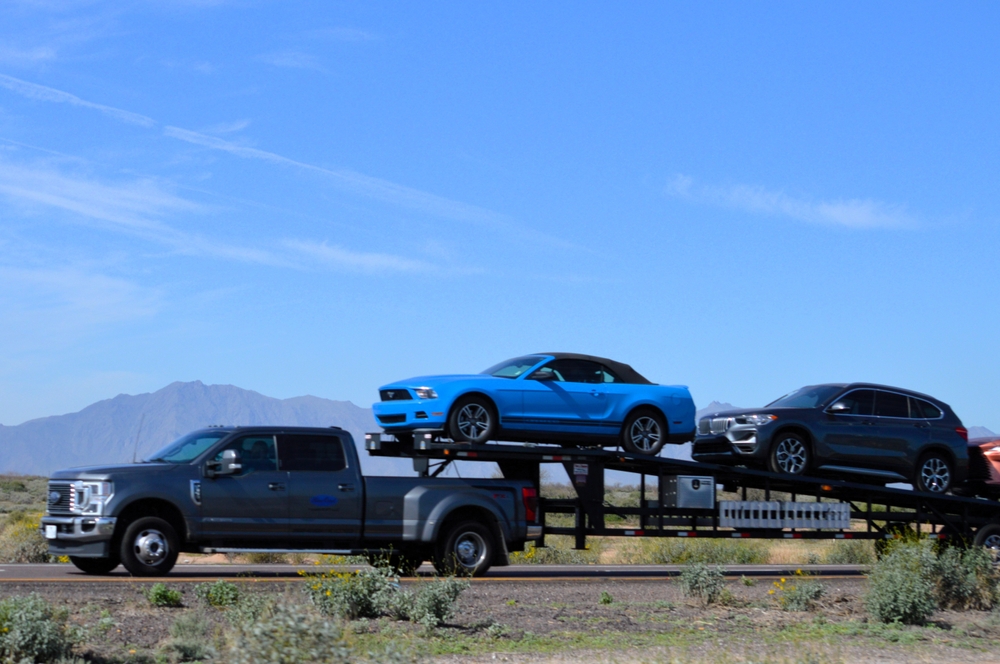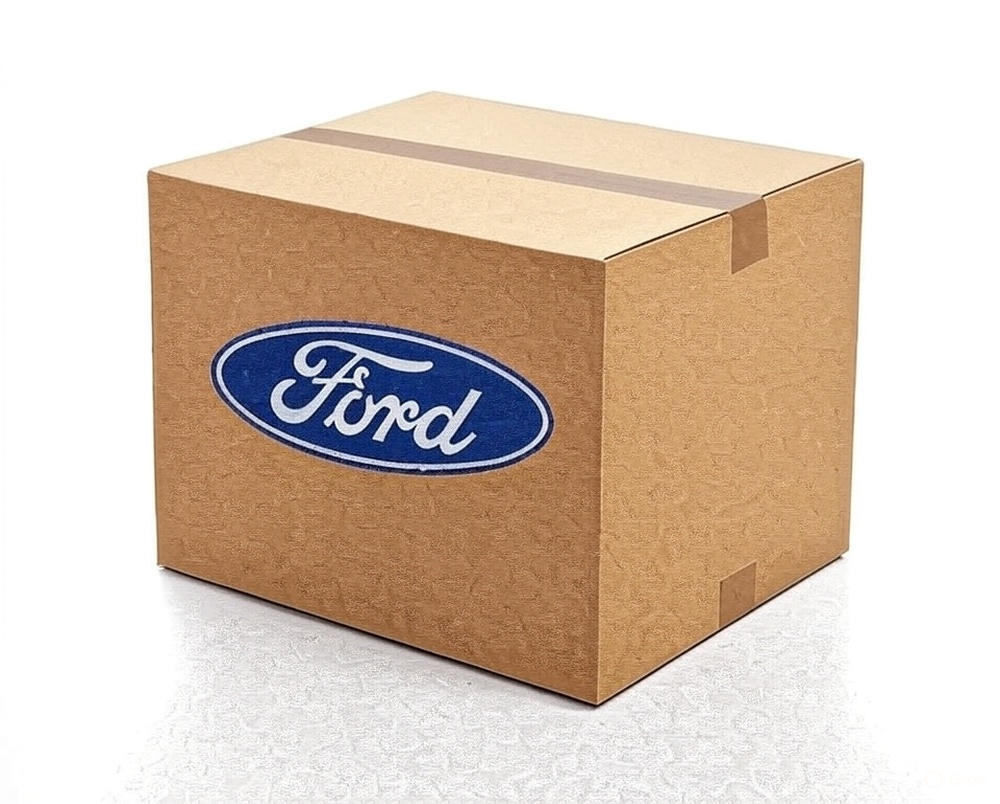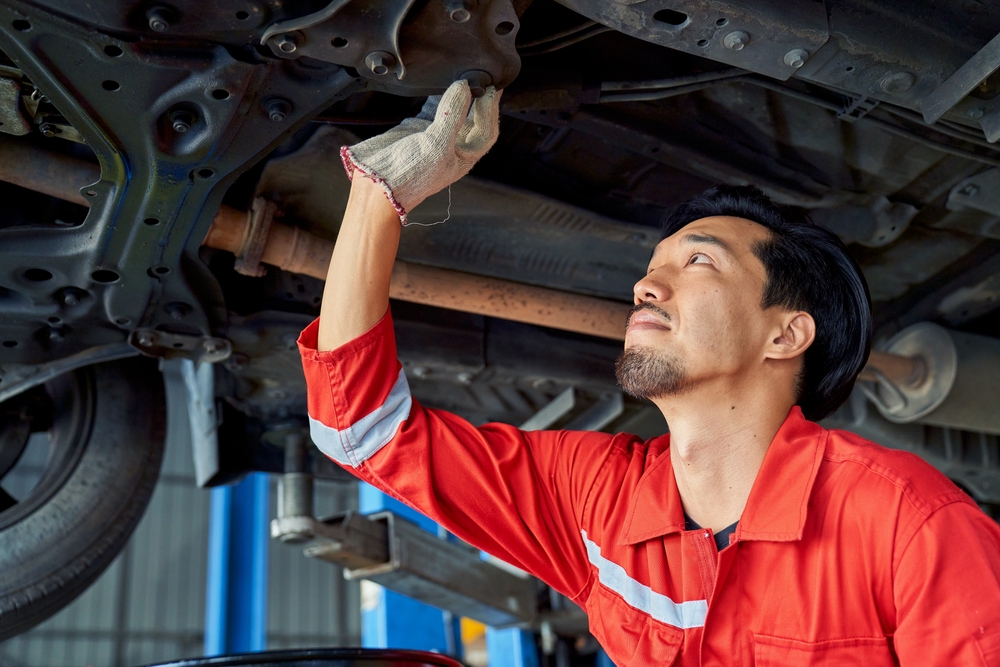Your Ford F-150 or Super Duty isn’t just sitting pretty in your driveway—it’s working hard. Whether you’re hauling construction materials to job sites around Rutherford County, towing a loaded trailer down I-24 toward Nashville, or handling weekend projects that demand serious capability. That kind of heavy-duty work puts real stress on your truck’s suspension system, and unlike lighter-duty vehicles, your suspension components face accelerated wear that demands closer attention.
The difference between a truck that handles confidently under load and one that feels sketchy when you’re towing 10,000 pounds or more is often the condition of your suspension. At Ford of Murfreesboro Service Center, we see firsthand how proper suspension maintenance keeps local haulers safe and productive, especially when Tennessee’s demanding roads and workloads are constantly testing your truck’s limits.
Is Your Ford Truck’s Suspension Ready for Tennessee Roads?
Tennessee roads throw everything at your truck’s suspension—from the pothole-riddled stretches along Memorial Boulevard after a hard winter to the constant weight shifts when navigating the hilly terrain around Stones River. Your suspension system isn’t just about comfort; it’s actively working to keep your truck stable when you’re carrying a heavy load of lumber or pulling a gooseneck trailer loaded with equipment. Every bump, every turn, and every hard stop puts force on components like shocks, struts, control arms, and bushings, which eventually wear down and compromise your truck’s handling.
For Murfreesboro haulers who regularly push their trucks to their towing and payload limits, suspension wear happens faster than the average driver experiences. When you’re consistently operating near your truck’s maximum capacity—whether that’s hauling aggregate for a construction project or towing a camper to Center Hill Lake—those components are working overtime. Ignoring early warning signs doesn’t just mean a rougher ride; it genuinely affects your ability to control your truck safely, especially when you need to brake suddenly on Highway 96 or maneuver through tight spaces at a busy job site.
5 Warning Signs Your F-150 or Super Duty Suspension Needs Service
Your truck will tell you when something’s wrong with the suspension—you just need to know what to listen and feel for. These warning signs are your truck’s way of saying it needs attention from a certified Ford service technician before a minor issue becomes a major safety concern:
- Nose-Diving When You Brake: If your truck’s front end dips dramatically forward when you apply the brakes, especially when loaded or towing, your shocks or struts are likely worn out. This isn’t just uncomfortable—it actually increases your stopping distance and makes emergency braking less effective, which is particularly dangerous when you’re hauling heavy loads down steep grades or navigating busy intersections around the Old Fort Parkway area.
- Excessive Bouncing After Bumps: A healthy suspension absorbs impacts and settles quickly. If your truck continues bouncing multiple times after hitting a bump on Medical Center Parkway or a rough railroad crossing, your shocks have lost their damping ability. This excessive movement makes it harder to maintain control, especially when towing, because it creates instability that can lead to dangerous sway.
- Uneven Tire Wear: When you notice uneven tire wear—like bald spots on the inside or outside edges—it often points to suspension problems affecting your truck’s alignment. Worn suspension components can’t hold proper alignment, causing your tires to wear unevenly and costing you money on premature tire replacements.
- Pulling to One Side: If your truck consistently drifts or pulls to one side when driving on flat, straight roads like Highway 231, suspension wear could be the culprit. While alignment issues often cause this, worn suspension components—like control arm bushings or ball joints—can prevent proper alignment from holding, meaning you’ll fight the steering wheel constantly.
- Clunking or Rattling Noises: Strange noises coming from underneath your truck, especially when going over bumps or rough pavement, usually indicate worn or loose suspension components. Ball joints, sway bar links, and bushings all develop play over time, creating noticeable sounds that signal it’s time for inspection.
Catching these symptoms early makes a huge difference. Minor suspension wear can be addressed with targeted component replacement, but ignoring warning signs leads to accelerated wear on other parts and potentially unsafe driving conditions, especially when your truck is loaded to capacity or pulling a heavy trailer on Tennessee highways.
The Factory-Recommended Suspension Service Schedule
Ford engineering designs suspension systems to last, but even the toughest components have service intervals that shouldn’t be ignored. Your owner’s manual provides baseline recommendations, but real-world use—especially the kind of heavy-duty work common in the Murfreesboro area—often means you need inspections more frequently than factory intervals suggest.
Generally, Ford recommends having your suspension inspected during regular maintenance visits, which typically happen every 5,000 to 7,500 miles depending on your driving conditions. During these inspections, technicians check for worn bushings, leaking shocks or struts, loose components, and any signs of damage that could affect performance or safety. For trucks that see regular heavy use—and let’s be honest, that describes most F-150 and Super Duty owners in Murfreesboro—more frequent inspections make sense, especially before major towing jobs or after particularly demanding work periods.
Shocks and struts don’t have a specific mileage replacement interval because wear depends heavily on how you use your truck. However, most suspension components show significant wear between 50,000 and 100,000 miles under normal conditions. If you’re regularly towing or hauling heavy loads, expect that timeline to compress considerably. Ball joints, control arm bushings, and other wear items may need replacement sooner when subjected to the constant stress of heavy-duty use.
Special Consideration for Murfreesboro Haulers: F-150 vs. Super Duty
Not all Ford trucks are built the same, and understanding the differences between F-150 and Super Duty suspension systems helps you maintain your truck properly. Both are incredibly capable, but they’re designed for different workloads, which affects how their suspensions wear and what maintenance they need.
The F-150, even in its heaviest-duty configurations, uses a lighter suspension setup optimized for a balance between capability and everyday comfort. Its independent front suspension provides excellent ride quality and handling for daily driving while still offering impressive towing and payload capacity. However, when you’re consistently operating near the F-150’s maximum tow rating—which ranges from around 5,000 to over 13,500 pounds depending on configuration—you’re pushing those components hard.
Super Duty trucks—F-250, F-350, and F-450—feature beefier suspension components designed specifically for extreme-duty work. They use heavier-duty shocks, stronger springs, and more robust mounting points to handle towing capacities that can exceed 37,000 pounds with the right setup. While these components are built tougher, they’re not indestructible, and the extreme loads Super Duty owners regularly haul still cause significant wear over time.
Why Heavy Towing Accelerates Suspension Wear
Understanding why towing and hauling put extra stress on your suspension helps you appreciate the importance of regular maintenance. When your truck is empty, the suspension components manage relatively light loads and moderate forces. Add a few thousand pounds of payload or hook up a heavy trailer, and suddenly those same components are working exponentially harder to control your truck’s movement and maintain stability.
Towing creates several suspension challenges simultaneously. First, the weight of the trailer pushes down on your rear suspension, compressing the springs and shocks and changing your truck’s geometry. Second, trailer sway and movement constantly push and pull on your truck’s rear end, forcing the suspension to work continuously to maintain stability. Those small corrections add up over time, accelerating wear on components like bushings and shocks that dampen these movements.
Braking while towing puts enormous stress on your entire suspension system. When you slow down with a heavy load, momentum shifts weight forward, compressing the front suspension while extending the rear. This nose-diving when you brake puts tremendous force on front shock absorbers and struts, which have to work much harder to control the truck’s pitch and keep you stable. Worn shocks can’t manage these forces effectively, leading to increased stopping distances and reduced control—exactly what you don’t want when you’re pulling a loaded equipment trailer through traffic on I-840.
Genuine Ford Suspension Parts: Why OEM Matters for Your NEW Truck
When it comes time to replace worn suspension components, you’ll face a choice: original equipment manufacturer (OEM) parts or aftermarket alternatives. For newer Ford trucks still under warranty or for owners who want to maintain peak performance, Genuine Ford suspension parts offer advantages that aftermarket options simply can’t match.
Ford engineers design suspension components specifically for your truck’s weight, power output, and intended use. Every shock absorber, spring, bushing, and control arm is precisely engineered to work together as a system, providing the handling characteristics, ride quality, and durability Ford promises. OEM parts maintain these exact specifications, ensuring your truck performs exactly as designed.
For newer trucks, using Genuine Ford parts protects your warranty. If you install aftermarket suspension components and later experience problems, you risk voiding warranty coverage on related systems. OEM parts keep your warranty intact, giving you peace of mind that you’re protected if something goes wrong. This matters especially for F-150 and Super Duty owners who depend on their trucks for work—the last thing you need is a warranty claim denied because of aftermarket parts when your truck is your livelihood.
Trust Murfreesboro’s Ford Truck Experts
When your truck shows signs of suspension wear, choosing the right service facility makes all the difference in getting the job done correctly. At Ford of Murfreesboro Service Center, our factory-trained technicians specialize in Ford trucks and understand exactly how F-150 and Super Duty suspension systems work. We’re not just turning wrenches—we’re applying specialized knowledge gained from ongoing Ford training and daily experience working on trucks just like yours.
Our comprehensive suspension inspection examines every component, identifying wear patterns and potential problems before they become safety issues. We’ll check your shocks and struts for leaks and wear, inspect bushings and ball joints for play, examine springs for damage or sagging, and assess your entire steering and suspension system for proper operation. This thorough approach catches problems early, when they’re easier and more affordable to fix.
We understand that truck owners in the Murfreesboro area use their vehicles hard because that’s what they’re built for. Whether you’re running a construction business, hauling equipment for landscaping work, or using your truck for farm operations around Rutherford County, we respect that your truck is a tool that needs to work reliably every single day.
Ford Truck Suspension Components & Service Intervals
| Component | Function | Typical Service Interval | Signs of Wear |
|---|---|---|---|
| Shocks/Struts | Control bounce and body movement | 50,000-100,000 miles (less with heavy use) | Excessive bouncing, nose-diving, leaking fluid |
| Ball Joints | Connect control arms to steering knuckles | Inspect every service, replace as needed | Clunking noises, uneven tire wear, loose steering |
| Control Arm Bushings | Cushion suspension movement | Inspect every service interval, replace every 80,000-100,000 miles | Clunking over bumps, poor handling, alignment issues |
| Leaf Springs (Super Duty rear) | Support load and provide suspension | Inspect for damage, rarely need replacement | Sagging, cracking, unusual stance |
| Sway Bar Links | Reduce body roll during turns | Inspect every service, replace as needed | Rattling or clunking during turns or over bumps |
Note: Heavy towing and hauling significantly reduce these intervals. Consult with your service advisor for a schedule tailored to your usage.
Frequently Asked Questions
Q: How often should I get my Ford F-150’s suspension inspected if I tow regularly?
A: If you’re towing regularly—especially near your truck’s maximum capacity—have your suspension inspected every 5,000 miles or at each oil change. Heavy towing accelerates wear considerably, and frequent inspections catch problems early before they become safety concerns or damage other components.
Q: What are the signs of bad shocks or struts on a Ford Super Duty?
A: Common signs include excessive bouncing after hitting bumps, nose-diving when braking, poor handling or instability when towing, visible fluid leaking from the shocks, and uneven tire wear. If you notice any of these symptoms, especially when loaded or towing, it’s time for an inspection.
Q: Does hauling heavy loads in my new F-150 void the warranty if the suspension fails?
A: No, as long as you’re operating within your truck’s rated capacity and following recommended maintenance schedules. Ford trucks are designed for heavy work, and normal wear from proper use is covered. However, exceeding payload or towing ratings, or neglecting maintenance, could affect warranty coverage. According to federal guidelines on safe towing, always stay within your vehicle’s ratings.
Q: What is included in a multi-point suspension inspection at Ford of Murfreesboro?
A: Our comprehensive inspection examines all suspension components including shocks/struts, springs, ball joints, control arms and bushings, sway bar links, steering components, and alignment. We also check for fluid leaks, unusual wear patterns, and any damage that could affect performance or safety. You’ll receive a detailed report of findings with recommendations prioritized by urgency.
Q: Can you upgrade a Ford truck’s suspension for better towing?
A: Yes, several upgrade options exist for improved towing performance, including heavy-duty shocks designed for maximum load capacity, upgraded helper springs or air bags for additional rear support, and enhanced sway control systems. Our service team can discuss which upgrades make sense for your specific towing needs and truck configuration.
Schedule Your Suspension Inspection Today
Don’t let worn suspension components compromise your safety and capability on Murfreesboro roads and job sites. The factory-trained experts at Ford of Murfreesboro Service Center specialize in Ford truck suspension systems and understand exactly what your F-150 or Super Duty needs to keep performing at its peak. We have the advanced diagnostic equipment, Genuine Ford parts, and specialized knowledge to handle any suspension issue efficiently and get you back to work with confidence.
With the demanding loads you haul and the tough conditions Tennessee roads throw at your truck, waiting to address suspension problems only accelerates wear on other components and increases safety risks when you’re towing or hauling heavy loads. Our comprehensive inspection approach examines every suspension component, identifying wear before it becomes dangerous and ensuring you get the targeted service your truck actually needs rather than unnecessary repairs.
Click here to schedule your suspension inspection and haul with confidence!
Or visit us at 1550 NW Broad Street, Murfreesboro, TN, 37129, and let our certified technicians ensure your Ford truck’s suspension is ready for whatever tough jobs Tennessee throws your way.

